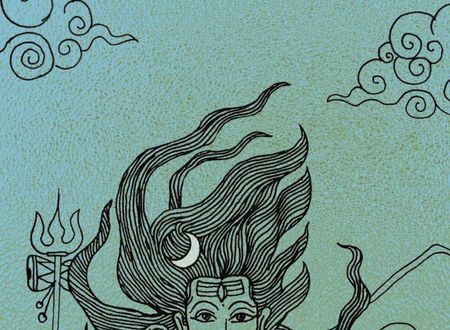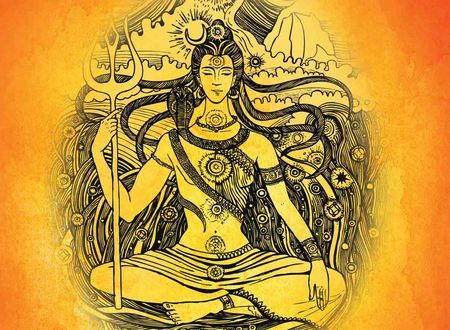Agatha Christie is well and truly the queen of mystery.
Her whodunits are the perfect delight for the mystery lover. Christie crafts her characters intricately. She sets up the plot meticulously. And introduces plot twists at regular intervals to keep her reader on their toes.
She conjures believable red-herrings to lead her readers down the wrong road. When she reveals the identity of the murderer, the reader experiences a sublime aha moment filled with pure and unadulterated joy.
Hercule Poirot
Agatha Christie’s most famous character is the Belgian detective Hercule Poirot. Retired from the police department in Belgium, he is now a private detective in England. He has a thick foreign accent, a big mustache and an even bigger ego. He justifiably believes he is the best detective in the world, and everyone has heard of him.
He does not employ conventional detective methods. His biggest asset is his world-famous “grey cells”, which put together all the facts and inferences and helps him identify the murderer. He is a student of human nature, and uses inferences that delve deep into the personalities of the suspects.
Captain Hastings
Captain Hastings is Poirot’s sidekick. He lacks imagination, is easily trusting, but is proper and scrupulous and admittedly old fashioned. Poirot often seeks Hastings’s opinion of the case, to get a different angle on the happenings. In most of the Poirot stories, Hastings is the narrator.
In some of the books, a chance remark or an innocuous observation by Hastings gives Poirot the clue necessary to solve the case.
Without further ado, here are seven famous Agatha Christie books that are totally worth the hype.
1. And Then There Were None
This psychological thriller is arguably Agatha Christie’s most famous book.
Ten people are summoned to an island. A pre-recorded voice plays, accusing the ten people of murder each. The voice goes on to say that as a punishment, each of the ten will be killed.
People start getting killed one by one.
A search finds that there is no host — the island consists of these ten people and nobody else.
Giving rise to the chilling fact: The murderer is one of them.
This gripping tale is certain to keep you up at night till you finish the book.
2. Murder on the Orient Express
This book has been made into multiple movie versions.
The 1974 movie has a star-studded ensemble cast. Albert Finney plays Hercule Poirot (and I love his portrayal). Other big names include Lauren Bacall, Ingrid Bergman, Sean Connery and Anthony Perkins. I loved this movie adaptation of the book.
The 2017 movie has a star-studded ensemble cast as well. Kenneth Branagh, who is known for his Shakespeare adaptations and as Gilderoy Lockhart in the Harry Potter series, plays the part of Hercule Poirot and directs the movie. Johhny Depp plays the unlikeable Ratchett who gets murdered. Other big names include Penélope Cruz, Michelle Pfeiffer and Josh Gad. (For the curious, I liked the 2017 adaptation as well).
In a train-journey in the Orient Express, Edward Ratchett approaches fellow passenger Hercule Poirot to be his bodyguard for a princely sum of 15,000 pounds. Hercule Poirot refuses.
A snowstorm brings the train to a halt. The following morning Ratchett is found murdered. As the train is isolated in the middle of nowhere, the murderer is someone in the train.
Hercule Poirot conducts an investigation in the train, examining the evidence and interviewing every passenger.
The surprise ending has a unique flavor, and demonstrates Hercule Poirot’s compassion in addition to his fine detective skills.
3. The Murder of Roger Ackroyd
This is one of Agatha Christie’s most famous books.
In the peaceful and idyllic town of Kings Abbott, a wealthy widow Mrs. Ferrars unexpectedly commits suicide. This greatly distresses her fiance Roger Ackroyd. In less than 24 hours, Roger Ackroyd is murdered.
Hercule Poirot, who has retired, is living a life of lesiure and quiet at Kings Abbott. He comes out of retirement to solve the murder(s).
Captain Hastings is not available as the narrator of the book — he is happily married and living in Argentina. Dr. Sheppard, who lives with his sister Caroline, capably dons the role of narrator. He also helps Poirot with his investigations.
Some pundits object to the nature of the plot twist/murderer. I disagree. This book satisfied me thoroughly. Any objection on the literary device employed is theoretical at best, and frivolous at worst.
4. The Mysterious Affair at Styles
This was Agatha Christie’s first ever book. Her sister Madge dared her to write a story. The rest, as they say, is history.
Captain Hastings is injured in the the First World War and returns to England. His friend John Cavendish invites him to convalesce at their home, Styles. Other members living at Styles are John’s step-mother, her new husband, Alfred, and John’s wife Mary.
Hastings has a hunch that something is amiss at Styles. And indeed, Mrs Inglethorp is found poisoned. The murderer had to be someone at Styles.
Hastings calls Poirot to help investigate. Poirot doesn’t fail to disappoint. In addition to playing detective, he plays the part of a marriage counselor as well.
5. The ABC Murders
Agatha Christie goes alphabetical here.
Poirot receives a mysterious signed “A.B.C.”. The letter outlines a murder which will be committed soon. Two more letters arrive in similar fashion. The murders are committed alphabetically:
Alice Ascher is killed in her tobacco shop Andover
Betty Barnard is killed on the beach at Bexhill
Sir Carmichael Clarke is killed at his house in Churston.
In each murder, an ABC Rail Guide is found next to the victim.
One man is linked to all three murders: Alexander Bonaparte Cust, a traveling salesman who suffers from epilepsy and frequent memory blackouts. All the evidence points to Cust being the murderer. His initials are A.B.C. There is an unopened box of ABC Rail Guides in his room. The typewriter and the paper used to send the ABC letters are found in Cust’s room.
Poirot, however, refuses to accept the obvious solution if it doesn’t add up. He investigates further to catch the real murderer.
6. Curtain: Poirot’s Last Case
This is a bittersweet book. Filled with nostalgia. Filled with memories. Agatha Christie’s emotions are visible in this book. This is the last novel published before Christie’s death (Sleeping Murder, Miss Marple’s final case, was published posthumously after Christie’s death.)
Time has passed by quickly. Poirot and Hastings have grown old. Poirot is in a wheelchair. Hastings’s wife Cinderella has died. Hastings’s daughter Judith is a major character in this novel. Poirot and Hastings unite again at Styles Court, where it all started.
Poirot is investigating a murder where the murderer uses a psychological technique that has gone undetected so far. The murderer is at Styles court and will strike again unless Poirot intervenes. Can Poirot succeed in his final hurrah?
7. The Mousetrap
The Mousetrap is a play which opened in London’s West End in 1952 and ran continuously until the Covid pandemic forced it to be temporarily discontinued between March 2020 and May 2021. After each screening, the audience is asked to not reveal the ending of the play to others.
This play is available in print as a short story titled Three Blind Mice (Agatha Christie loves nursery rhymes, and has stories based on other nursery rhymes including “Hickory Dickory Dock”, “One Two Buckle My Shoe”, “Sing A Song of Six Pence A Pocket Full of Rye”).
Giles and Molly Davis have inherited Monkswell Manor from Molly’s Aunt Katherine, and they have decided run it as a guest house. During a heavy snowstorm, a set of people are trapped together. One of the guests is found dead. The killer is one of the people in the guest house.
Agatha Christie, who loves the psychological angle, provides another masterful work filled with intrigue.
The Final Word
Death on the Nile is one of Agatha Christie’s most famous book, and Kenneth Branagh has adapted it into a movie in 2022. This book, however, is not one of my favorites and did not make the cut.
Which among these is your favorite? And your least favorite? Let me know in the comments.
Image Credit: Jeremy Horvatin on Unsplash









Comments & Discussion
17 COMMENTS
Please login to read members' comments and participate in the discussion.